Installation - Windows
This document describes the steps to install the software development environment for U3V camera on Windows.
Expected environment
In this document, the following environment is assumed.
- OS: Windows 10/11, 64 bit version
- Development environment (One of them)
- Python 3.11 (with VS Code)
- C++: Visual Studio 2019/2022 (17.09 or earlier)
- Hardware:
- USB3.0 compatible USB port x2
If you are using MSVC 2022 (17.10 or later), install OpenCV 4.10.0 or later from the officieal website.
Do not forget to add the directory containing the DLL library to the PATH environment variable. See the detail in Update OpenCV.
Prerequisite
- Python 3.11
Sensing-dev Software Packages
Please DL the installer script at the top of the page or here.
Open the powershell terminal and move to the directory where you have the installer script downloaded in the previous step.
Then type the following command. If you do not have and need OpenCV, you can add -InstallOpenCV option.
.\installer.ps1 -user <username> -version v24.01.04
The default installation path would be "C:\Users\<username>\AppData\Local\sensing-dev".
When you get
installer.ps1 cannot be loaded because running scripts is disabled on this system
your powershell does not allow to run the script. If so, please add -ExecutionPolicy Bypass option as the following example:
powershell.exe -ExecutionPolicy Bypass -File installer.ps1 -user <username> -version v24.01.04
If you with to use python-binding (ionpy), please install with pip.
pip3 install -U pip
pip3 install ion-python==1.6.0
pip3 install gendc-python==0.1.0
Install WinUSB driver on U3V device.
This step is only required the first time a U3V camera device is connected to a host machine.
- To apply WinUSB to the target USB device, you need to know Vendor ID and Product ID of the device. Check your U3V camera device using Device Manager. In the search box on the taskbar, type device manager, then select Device Manager from the menu.
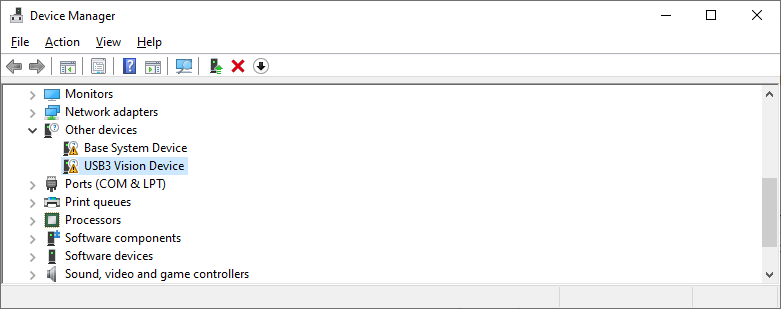
The image shows there are two unknown U3V camera devices connected on my host machine and we need to install the WinUSB driver.
You now double-click the U3V camera device and select the Details tab on the pop up window.
From the dropdown menu, choose Hardware Ids and now you can see the Vendor ID in the box following VID_, and Product after PID_BA03.
In the example below, they are 2676 and BA03 respectively.
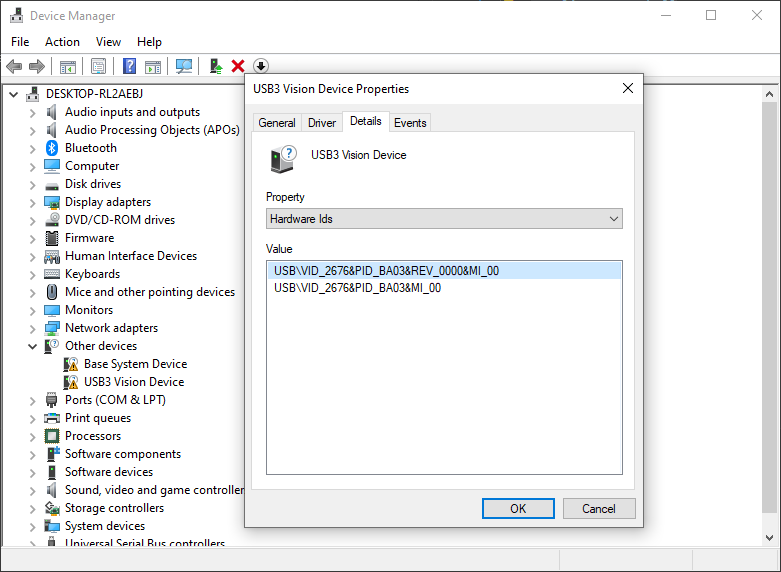
- Execute the following command on powershell console with Vendor ID that you checked in the step1. This process may take up to 5 minutes.
Invoke-WebRequest -Uri https://github.com/Sensing-Dev/WinUSB-installer-generator/releases/download/v24.02.02/generate_and_apply_WinUSB.ps1 -OutFile generate_and_apply_WinUSB.ps1 -Verbose; powershell.exe -ExecutionPolicy Bypass -File ./generate_and_apply_WinUSB.ps1 <Vendor ID> <Product ID>
When you replace <Vendor ID> and <Product ID> with their actual values, you do not need < and >.
- Example with some U3V camera devices
| <Vendor ID> | <Product ID> | |
|---|---|---|
| Basler daA1280-54uc | 2676 | BA03 |
| Sony Kizashi1.2 | 054C | 0D7D |
- Open Device Manager again, and right click on your device and choose uninstall device.
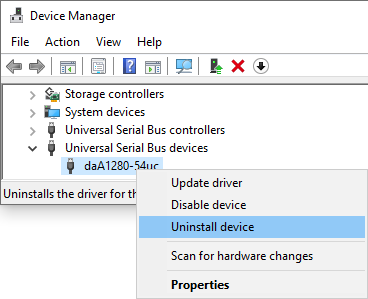
- Click the checkbox and click uninstall device
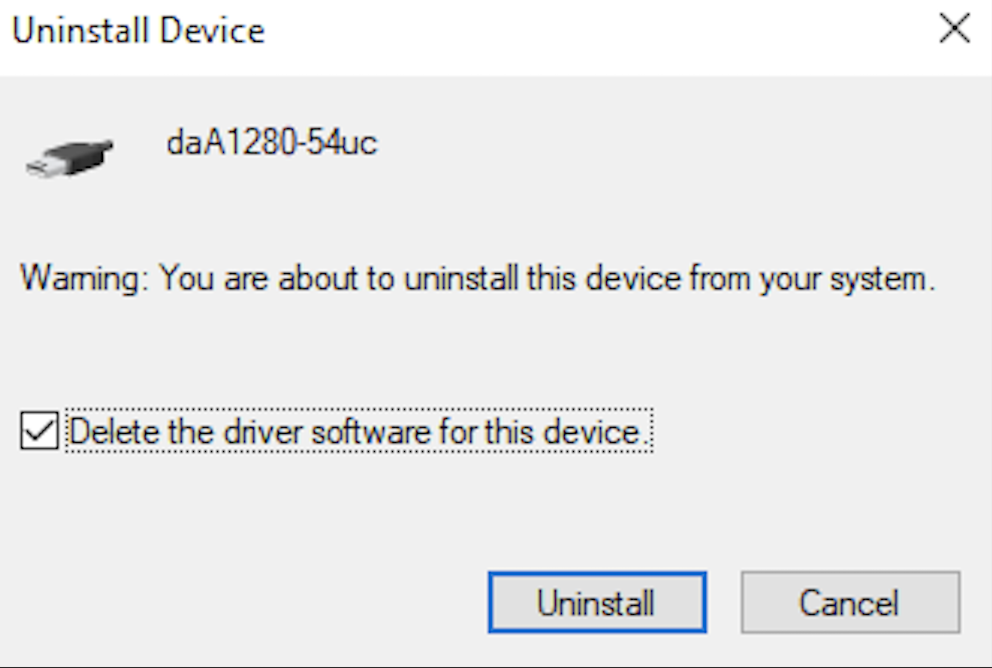
- Open Action and click scan for hardware changes

If your device is displaying as an unknown device, congratulations! The WinUSB driver has been successfully uninstalled!
Set environment variables.
Running the installer.ps1 script would automatically set the environment variable %PATH% and %SENSING_DEV_ROOT% which SDK requires, so you may skip this step.
However, if you change the default path or move the package location, it requires to set them manually with the following precedure:
Hit Windows key ⊞ or click ⊞ at the corner of task bar to use start-menu.
Type Environment variable to find Edit environment variables got your account to open the window of Environment Variables.
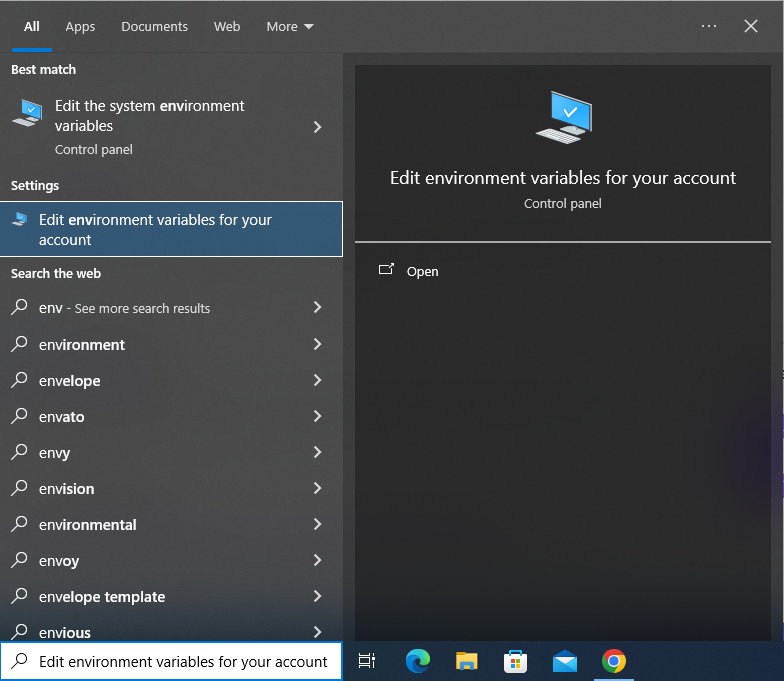
- There's environment variables for user and system at the top and bottom of the window respectively, and we edit user variables.
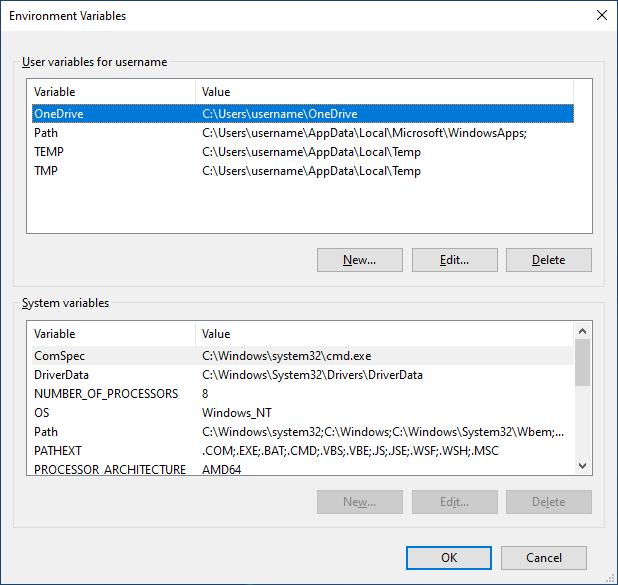
- With
NewandEdit, set the following environment variables.
| Name of variable | Value | New/Edit(append) |
|---|---|---|
| SENSING_DEV_ROOT | <where you installed SKD> | NEW |
| PATH | <where you installed SKD>/bin | Edit(append) |
Using arv-tool-0.8 may help to check if the software package is appropriately installed. Please check this page to know the procedure.